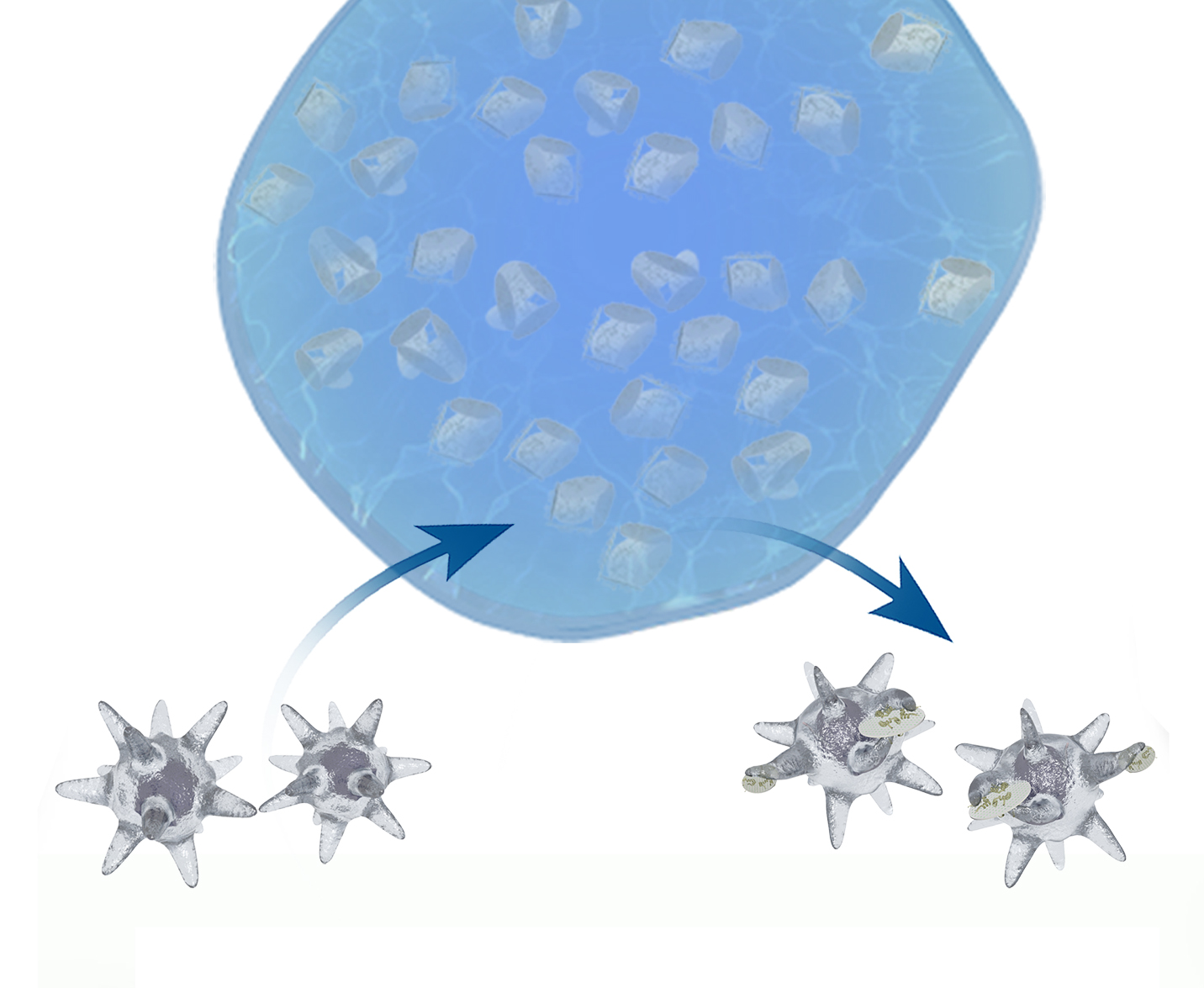Research led by Professor Gordon Xu of the Australian Institute for Bioengineering and Nanotechnology (AIBN) has shown that clay nanoparticles can significantly boost immune responses as vaccine adjuvants.
 The findings, recently published in the journal Small (2018, 14: e1704465), suggest that these nanoparticles could be used in the development of more effective, longer lasting vaccines.
The findings, recently published in the journal Small (2018, 14: e1704465), suggest that these nanoparticles could be used in the development of more effective, longer lasting vaccines.
Vaccines work by presenting the immune system with an inactive version of a virus, bacterium or other pathogen so that the immune system will recognize the invader and mount a swift response should it ever encounter the real thing.
By using an inactive version of the pathogen, or even just a few key pieces of it, a vaccine trains the immune system without actually causing the disease itself.
Unfortunately though, vaccines — including purified proteins and genes — are not able to generate a strong immune response on their own to ensure robust, long-lasting immune memory.
To compensate for this, many vaccines incorporate molecules or composites called adjuvants, which enhance the immune responses and prolong the vaccination effect.
Primarily, adjuvants accomplish this by creating a local inflammatory response, which attracts immune cells to the site of vaccination, enabling more immune cells to come into contact with the vaccine.
Most vaccine formulations now contain adjuvants, and many commercial adjuvants can produce strong reactions in order to stimulate the desired immune response, but these immune responses might end up a bit lopsided. For example, you might get a good humoral immune response, where plenty of antibodies are produced, but fail to also generate a strong cellular immune response, which is needed for long lasting immune cell memory. Ideally you want both.
The most widely used adjuvant, alum (aluminium hydroxide phosphate/sulfate) has a good safety profile and a strong humoral immune response, but it is non-biodegradable and can persist in the body for more than a year, without promoting a strong cellular immune response that is required against bacterial infection.
There is a need for the development of easily cleared, biodegradable adjuvants that can stimulate long term humoral and cellular immune responses, without triggering unwanted side-effects.
In recent decades, researchers have explored the possibility of using nanoparticles as adjuvants. However, most nanoparticles seem to only promote a moderate immune response and don’t assist with delivery of the vaccine to the immune cells.
Clay nanoparticle vaccines may provide a more promising way forward. A clay nanoparticle vaccine is composed of a nanoscale wafer of clay mineral with an antigen attached on the surface, such as a protein from a virus.
Clay nanoparticles activate a variety of immune responses and also facilitate the uptake of the vaccine by immune cells, but exactly how they do this is not well understood.

To find out, AIBN’s Professor Xu and his colleagues took a closer look at how clay nanoparticles are interacting with the immune system.
“We tried to understand why clay nanoparticles are so good as vaccine adjuvants,” says Xu.
When a vaccine is injected just under the skin, the vaccine components aggregate together, forming a nodule. Xu and his colleagues discovered that, depending on which adjuvant is used, there is a difference in how dense that nodule is, and this affects how it interacts with immune cells.
They found that although alum is good at attracting immune cells to the injection site, the alum gathers with the vaccine into a very dense nodule. As a result, the immune cells can’t penetrate the nodule and can only gather around on the outside, which limits their ability to take up the vaccine.
By contrast, the clay nanoparticles don’t attract as many immune cells, but they form a lose nodule with the vaccine. Consequently, the immune cells that do arrive have an easier time infiltrating the nodule and taking up the vaccine, thus affording better and longer immune memory.
Xu and colleagues also compared the disappearance rate of the clay nanoparticles with standard alum. Alum disappeared very slowly; after 20 days only 20% of the original alum disappeared. By comparison, 50% of clay nanoparticles biodegraded in the same time period. Moreover, after 2 months, the clay nanoparticles almost completely disappeared from the vaccination site, while the alum still lingered.
The findings suggest that clay nanoparticles could be used in the design of new generation vaccine adjuvants that generate potent and sustained immune responses.



